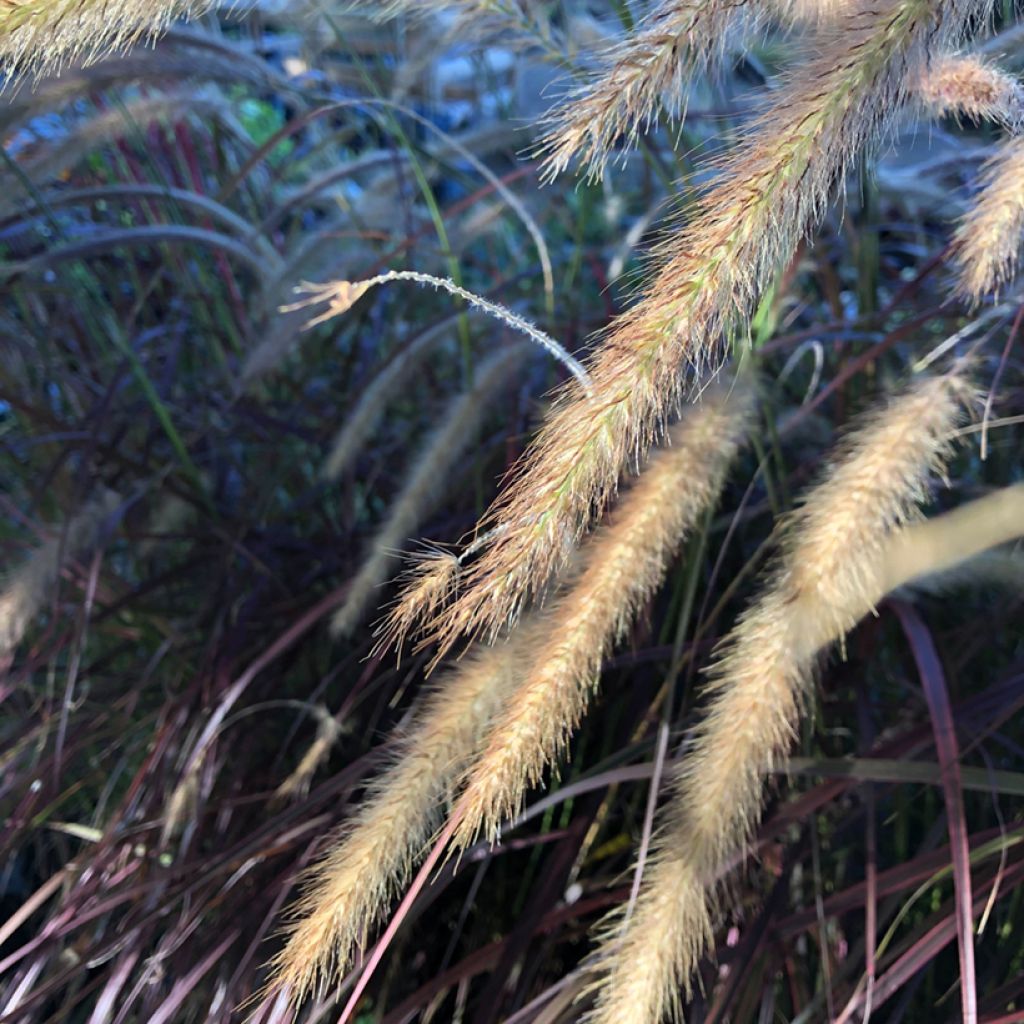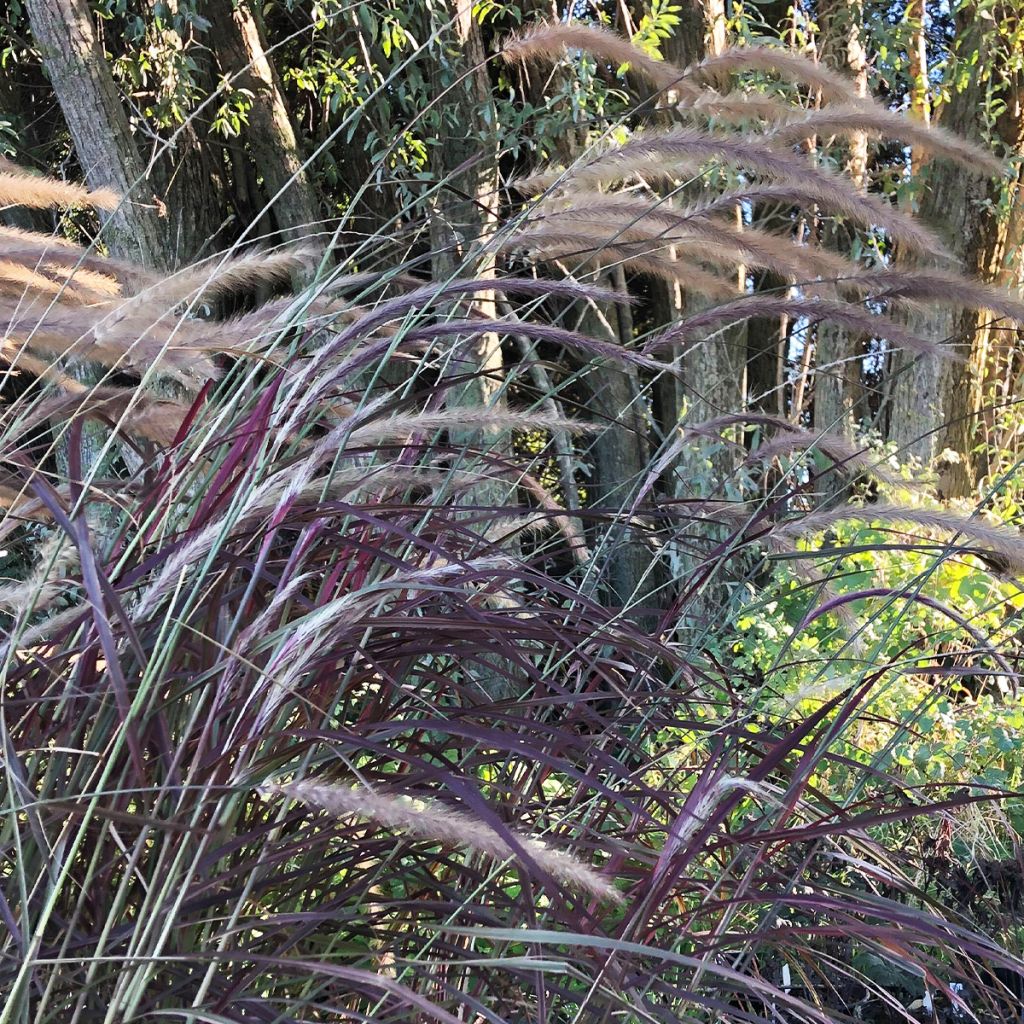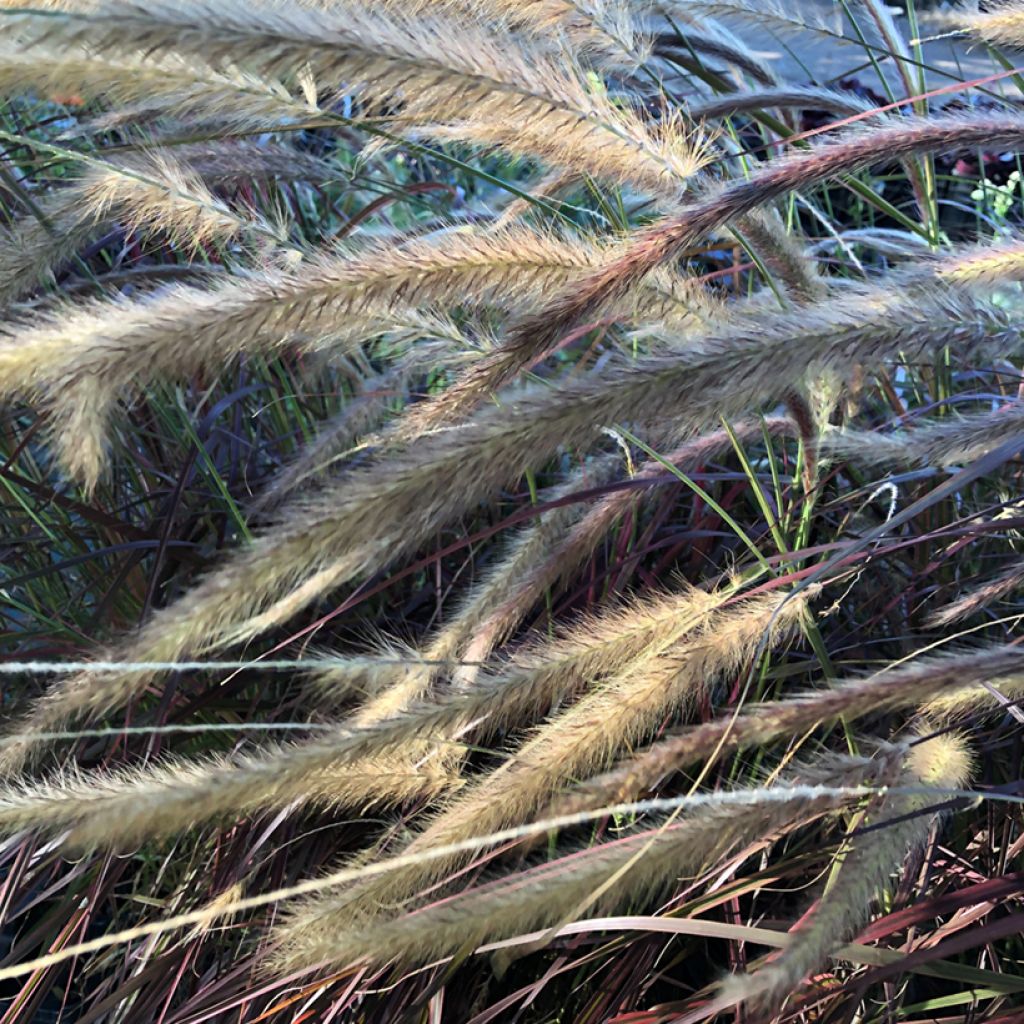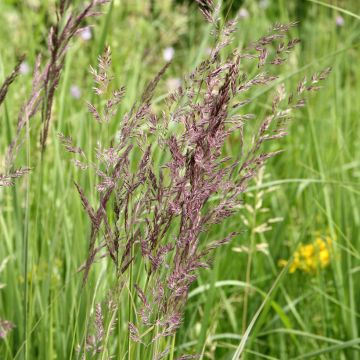

Pennisetum setaceum Firework


Pennisetum setaceum Firework


Pennisetum setaceum Firework


Pennisetum setaceum Firework


Pennisetum setaceum Firework


Pennisetum setaceum Firework
Pennisetum setaceum Firework
Pennisetum setaceum Firework
Fountain Grass, African Fountain Grass, Tender Fountain Grass, Purple Fountain Grass
Why not try an alternative variety in stock?
View all →This plant carries a 6 months recovery warranty
More information
We guarantee the quality of our plants for a full growing cycle, and will replace at our expense any plant that fails to recover under normal climatic and planting conditions.
From €5.90 for pickup delivery and €6.90 for home delivery
Express home delivery from €8.90.
Does this plant fit my garden?
Set up your Plantfit profile →
Description
The Pennisetum setaceum 'Fireworks', also known as Red Fountain Grass, is a perennial grass that is often cultivated as an annual in our climate. When it first emerges, its foliage is striped with red, pink, and green, transforming into soft, reddish-purple ribbons at maturity. From mid-summer to autumn, soft, purple-pink, becoming blonde, feathery plumes emerge from a fountain of gracefully arching foliage. This ornamental grass is versatile and essential. It adds a touch of exoticism and elegance to flower beds and is perfect for floral arrangements in both modern and romantic or natural compositions. Its inflorescences are stunning in dried bouquets. It thrives in well-drained, moist to dry soil and full sun.
Pennisetum setaceum Rubrum is a rhizomatous perennial plant native to tropical Africa that cannot tolerate temperatures below -8°C (17.6°F) but exhibits rapid growth. In our climate, it reaches maturity in a few months from a young plant, allowing it to be grown as an annual. The cultivar 'Fireworks', discovered in 2005, forms a fountain of rough, striped foliage that reaches 80 cm (32in) in height when flowering, with a width of 50 cm (20in), displaying particularly rich hues. The flowering period extends from July to October, longer if the autumn is mild. The arching plumes gracefully droop above the foliage, supported by stiff stems. They consist of tiny pink to purple-pink spikelets arranged in narrow, feathery panicles 20 to 30 cm (8 to 12in) long and covered in long hairs. As they fade, they take on a more straw-coloured hue.
Pennisetum setaceum Rubrum is the most well-known of the Pennisetum genus and remains popular among professional and amateur gardeners. It is versatile, both in its exotic and elegant appearance, ease of cultivation, and undemanding nature. It is well-suited to coastal areas and drought conditions, making it useful in dry gardens and flower pots or rockeries. Plant it en masse along pathways or create romantic scenes with autumn-flowering perennials such as asters, hardy chrysanthemums, and Japanese anemones. It also makes a good ground cover in mild climates.
Report an error about the product description
Pennisetum setaceum Firework in pictures


Flowering
Foliage
Plant habit
Botanical data
Pennisetum
setaceum
Firework
Poaceae
Fountain Grass, African Fountain Grass, Tender Fountain Grass, Purple Fountain Grass
Cultivar or hybrid
Other Pennisetum
Planting and care
Pennisetum setaceum is best planted in a location that receives full sun, although it can also be grown in partial shade. These plants prefer light and well-drained soil, even if it is poor or chalky. Once established, they can tolerate rather dry soil, but if you choose to plant them in a pot, they will require more regular watering. While typically grown as annuals, they are actually delicate perennials. If you bring them indoors at the first frost, you can enjoy their flowering period throughout autumn and winter. If you live by the seaside, you can grow them outdoors with proper mulching in winter. Prune them lightly in March, or leave them be and let the frost decorate their wonderful crown-shaped flower heads.
Planting period
Intended location
Care
This item has not been reviewed yet - be the first to leave a review about it.
Ornamental grasses
Haven't found what you were looking for?
Hardiness is the lowest winter temperature a plant can endure without suffering serious damage or even dying. However, hardiness is affected by location (a sheltered area, such as a patio), protection (winter cover) and soil type (hardiness is improved by well-drained soil).

Photo Sharing Terms & Conditions
In order to encourage gardeners to interact and share their experiences, Promesse de fleurs offers various media enabling content to be uploaded onto its Site - in particular via the ‘Photo sharing’ module.
The User agrees to refrain from:
- Posting any content that is illegal, prejudicial, insulting, racist, inciteful to hatred, revisionist, contrary to public decency, that infringes on privacy or on the privacy rights of third parties, in particular the publicity rights of persons and goods, intellectual property rights, or the right to privacy.
- Submitting content on behalf of a third party;
- Impersonate the identity of a third party and/or publish any personal information about a third party;
In general, the User undertakes to refrain from any unethical behaviour.
All Content (in particular text, comments, files, images, photos, videos, creative works, etc.), which may be subject to property or intellectual property rights, image or other private rights, shall remain the property of the User, subject to the limited rights granted by the terms of the licence granted by Promesse de fleurs as stated below. Users are at liberty to publish or not to publish such Content on the Site, notably via the ‘Photo Sharing’ facility, and accept that this Content shall be made public and freely accessible, notably on the Internet.
Users further acknowledge, undertake to have ,and guarantee that they hold all necessary rights and permissions to publish such material on the Site, in particular with regard to the legislation in force pertaining to any privacy, property, intellectual property, image, or contractual rights, or rights of any other nature. By publishing such Content on the Site, Users acknowledge accepting full liability as publishers of the Content within the meaning of the law, and grant Promesse de fleurs, free of charge, an inclusive, worldwide licence for the said Content for the entire duration of its publication, including all reproduction, representation, up/downloading, displaying, performing, transmission, and storage rights.
Users also grant permission for their name to be linked to the Content and accept that this link may not always be made available.
By engaging in posting material, Users consent to their Content becoming automatically accessible on the Internet, in particular on other sites and/or blogs and/or web pages of the Promesse de fleurs site, including in particular social pages and the Promesse de fleurs catalogue.
Users may secure the removal of entrusted content free of charge by issuing a simple request via our contact form.
The flowering period indicated on our website applies to countries and regions located in USDA zone 8 (France, the United Kingdom, Ireland, the Netherlands, etc.)
It will vary according to where you live:
- In zones 9 to 10 (Italy, Spain, Greece, etc.), flowering will occur about 2 to 4 weeks earlier.
- In zones 6 to 7 (Germany, Poland, Slovenia, and lower mountainous regions), flowering will be delayed by 2 to 3 weeks.
- In zone 5 (Central Europe, Scandinavia), blooming will be delayed by 3 to 5 weeks.
In temperate climates, pruning of spring-flowering shrubs (forsythia, spireas, etc.) should be done just after flowering.
Pruning of summer-flowering shrubs (Indian Lilac, Perovskia, etc.) can be done in winter or spring.
In cold regions as well as with frost-sensitive plants, avoid pruning too early when severe frosts may still occur.
The planting period indicated on our website applies to countries and regions located in USDA zone 8 (France, United Kingdom, Ireland, Netherlands).
It will vary according to where you live:
- In Mediterranean zones (Marseille, Madrid, Milan, etc.), autumn and winter are the best planting periods.
- In continental zones (Strasbourg, Munich, Vienna, etc.), delay planting by 2 to 3 weeks in spring and bring it forward by 2 to 4 weeks in autumn.
- In mountainous regions (the Alps, Pyrenees, Carpathians, etc.), it is best to plant in late spring (May-June) or late summer (August-September).
The harvesting period indicated on our website applies to countries and regions in USDA zone 8 (France, England, Ireland, the Netherlands).
In colder areas (Scandinavia, Poland, Austria...) fruit and vegetable harvests are likely to be delayed by 3-4 weeks.
In warmer areas (Italy, Spain, Greece, etc.), harvesting will probably take place earlier, depending on weather conditions.
The sowing periods indicated on our website apply to countries and regions within USDA Zone 8 (France, UK, Ireland, Netherlands).
In colder areas (Scandinavia, Poland, Austria...), delay any outdoor sowing by 3-4 weeks, or sow under glass.
In warmer climes (Italy, Spain, Greece, etc.), bring outdoor sowing forward by a few weeks.



























































